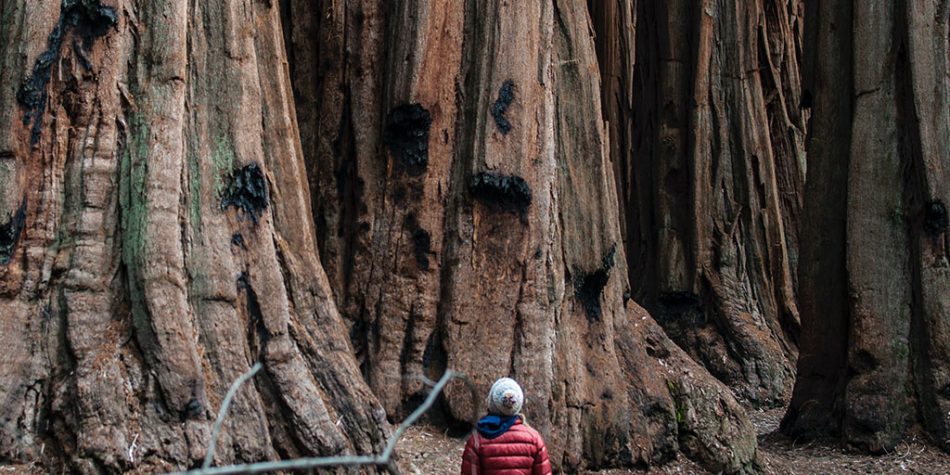This summer, my young daughters participated in our local library’s summer reading program. The theme was “Oceans of Possibility,” and throughout the summer, the library hosted various aquatic-themed storytimes and other educational activities. My girls particularly loved a whale-themed event that we attended. There were different stations set up throughout the room, each with a learning activity about whales—puzzles, coloring pages, and games. One station had a live stream of beluga whales playing on a large projector screen. The camera was grimy, the water was murky, and a whale only swam by every minute or two. And yet, my girls were mesmerized by it. They sat for a half hour or more, occasionally coloring their whale pictures but mostly watching the screen in amazement, pointing to the whales, giggling, and talking excitedly about ocean life. It was a joy for me to watch them experience such wonder and awe.
We live each day surrounded by God’s wonderful and extraordinary creations.
The giant sequoias of Northern California can live as long as 3,000 years. They have branches up to five feet in diameter, with bark up to 12 inches thick. A giant sequoia, known as General Sherman, is the largest living organism on the planet. The tree is about 2,100 years old, is estimated to weigh nearly three million pounds, stands 275 feet tall, and measures 100 feet wide at its trunk.
When I have experienced trials in my own life that I think are too painful to bear, I have never needed to look far to find wonders great and small.
The planet Jupiter is large enough to fit all of the other planets in the solar system inside of itself twice. The giant red spot on Jupiter is actually a storm with wind speeds of up to 270 miles per hour. The storm has been raging for hundreds of years and may have been observed as early as 1665. The planet has four major moons plus 63 smaller confirmed satellites.
At five weeks of pregnancy, a human embryo has a four-chambered heart that begins pumping blood. By the end of the first trimester, at less than four inches and two ounces, the baby has all of its major organ systems in place. Within only an hour of birth, many mothers can identify their baby by smell alone.
When Moses was shown the vast expanse of God’s creation, he was overwhelmed by its magnitude. “And the presence of God withdrew from Moses, that his glory was not upon Moses; and Moses was left unto himself. And as he was left unto himself, he fell unto the earth. And it came to pass that it was for the space of many hours before Moses did again receive his natural strength like unto man; and he said unto himself: Now, for this cause I know that man is nothing, which thing I never had supposed.”
Elder Dieter F. Uchtdorf taught, however, of the “paradox of man: compared to God, man is nothing; yet we are everything to God. While against the backdrop of infinite creation we may appear to be nothing, we have a spark of eternal fire burning within our breast.” This is, perhaps, the greatest wonder of all, that we are children of a Father in Heaven, that through His son Jesus Christ he offers salvation to all who will come unto Him and repent.
Observing these wonders, or “counting our blessings,” can lead to a profound sense of gratitude, even in times of suffering, uncertainty, or turmoil. Elder Ulisses S. Soares taught, “When we truly are in awe of Jesus Christ and His gospel, we are happier, we have more enthusiasm for God’s work, and we recognize the Lord’s hand in all things. Additionally, our study of God’s words is more meaningful; our prayers more intentional; our worship more reverent; our service in God’s kingdom more diligent. All these actions contribute to the Holy Spirit’s influence being more frequent in our lives.”
Even when our present circumstances don’t seem to reflect much joy at all, we can feel much for what we anticipate in the future—a gratitude that can be felt now through faith. Speaking of nourishing just this “sense of gratitude…in any circumstance,” Elder Uchtdorf spoke of relishing “the many and sacred truths we do know”—namely, “that our Father has given His children the great plan of happiness; that through the Atonement of His Son, Jesus Christ.” On this foundation, Elder Uchtdorf underscored the joy that can come in appreciating that:
We can live forever with our loved ones; that in the end, we will have glorious, perfect, and immortal bodies, unburdened by sickness or disability; and that our tears of sadness and loss will be replaced with an abundance of happiness and joy, ‘good measure, pressed down, and shaken together, and running over.’
Experiencing joy, awe, wonder, and, therefore, gratitude does not require that we be willfully ignorant of the trials and sufferings of others. On the contrary, research has shown that grateful people actually demonstrate more pro-social behaviors. Numerous studies over decades have demonstrated the positive psychological effects of gratitude; therefore, it should not be surprising that happier people are more willing to serve. Latter-day Saints have a sacred hymn about this attitude—”because I have been given much, I too must give.”
Back to my daughters, this year I read them one of my favorite children’s novels, Anne of Green Gables. Ever the optimist, Anne is in many ways my opposite—so each time I pick up the book, I learn something new from her. The 11-year-old fictional protagonist living in19th century rural Canada was orphaned as a toddler and passed around between abusive foster homes. At the start of the story, Anne is adopted by a middle-aged brother and sister. Despite having a hard start to life, Anne has the ability to find the beauty in everyday life.
Anne certainly experiences sadness (“I can’t. I’m in the depths of despair. Can you eat when you are in the depths of despair?”) and disappointment (“Well, that is another hope gone. ‘My life is a perfect graveyard of buried hopes.’ That’s a sentence I read in a book once, and I say it over to comfort myself whenever I’m disappointed in anything.”) She, like many of us, wallows (“I can’t cheer up—I don’t want to cheer up. It’s nicer to be miserable!”) And yet she finds reasons for joy and gratitude in the life that she has been given, and the world in which she resides. “Isn’t it splendid to think of all the things there are to find out about? It just makes me feel glad to be alive—it’s such an interesting world. It wouldn’t be half so interesting if we knew all about everything, would it?”
As she grows older, Anne learns even to find joy in the challenges of her life. “I’ve done my best, and I begin to understand what is meant by the `joy of the strife.’ Next to trying and winning, the best thing is trying and failing.”
Anne’s approach to life seems countercultural in a world where bitterness, anger, and resentment serve as social currency. But it is an approach that is not only backed by science but, more importantly, backed by scripture. Daniel gave thanks to God even when displays of his religion were outlawed. Jonah gave thanks in the belly of the fish. Hannah, in her gratitude, gave up her long-wished-for son to serve the Lord. Jesus gave thanks before going to the cross.
In the midst of the 2020 COVID-19 Pandemic and civil unrest in many areas of the world, President Russell M. Nelson offered a global message of hope. “There is no medication or operation that can fix the many spiritual woes and maladies that we face,” he explained. “There is, however, a remedy—one that may seem surprising—because it flies in the face of our natural intuitions. Nevertheless, its effects have been validated by scientists as well as men and women of faith. I am referring to the healing power of gratitude.”
When I have experienced trials in my own life, the ones that I think are too painful to bear, I have never needed to look far to find wonders great and small for which to have gratitude: the gentle touch of my baby’s skin against mine, the warmth of fresh bread, the promise of an eternal family, the assurance that my Savior carries my burdens with me. President Nelson’s invitation to cultivate gratitude remains applicable during both worldwide disasters and personal tribulations. With President Nelson and with David of old, I feel to say:
I will bless the Lord at all times: his praise shall continually be in my mouth. My soul shall make her boast in the Lord: the humble shall hear thereof and be glad. O magnify the Lord with me, and let us exalt his name together. I sought the Lord, and he heard me and delivered me from all my fears. They looked unto him and were lightened: and their faces were not ashamed. This poor man cried, and the Lord heard him and saved him out of all his troubles.
















